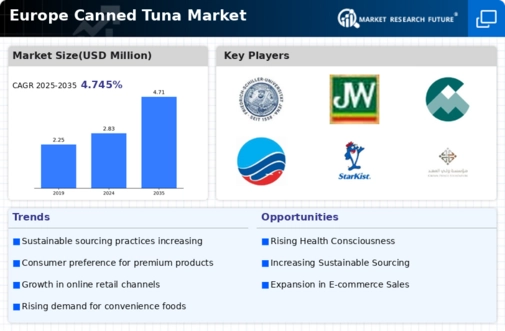The Europe Canned Tuna Market showcases a competitive landscape characterized by several key players who offer a variety of products catering to diverse consumer preferences. With an increasing trend towards sustainable sourcing and health-conscious eating, the market is becoming more dynamic as brands adapt to changing consumer demands and regulatory standards. The competitive insights reflect a focus on innovation, product differentiation, and strategic alliances. Companies are not only competing on price but also emphasizing the quality and sustainability of their products.
The evolving dietary habits in Europe are steering businesses to enhance their distribution channels, enhance marketing efforts, and explore new product lines, thereby intensifying competition among industry participants.Prince S.A. maintains a significant market presence within the Europe Canned Tuna Market, drawing on its established brand reputation and extensive distribution network across the region. The company's strengths lie in its commitment to quality and sustainability, ensuring that its canned tuna products meet high environmental and health standards. Prince S.A. has successfully leveraged its strong marketing strategies, connecting with environmentally conscious consumers who prioritize sustainable seafood options.
The company has also focused on expanding its product range to include various flavors and packaging formats, appealing to a broader consumer base while reinforcing its position as a leader in the canned tuna segment.Friedrichs has carved out a reputable niche within the Europe Canned Tuna Market, known for its high-quality products and emphasis on premium offerings. Its key products include various tuna preparations that highlight freshness and flavor, making a name for itself among discerning consumers. Friedrichs benefits from a robust distribution network and strong brand loyalty, which aid in maintaining its market presence.
The company is not only focused on product innovation but also actively explores mergers and acquisitions to enhance its operational capabilities and market reach. By consistently improving its product offerings and aligning them with consumer preferences, Friedrichs aims to uphold its competitive edge in the European market while addressing the growing demand for sustainably sourced seafood options.


















